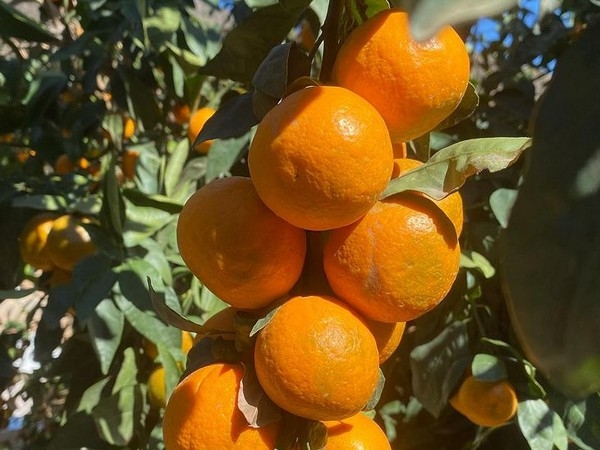Ojai's Famous Pixie Tangerine Struggles
to Survive Wildfires and a Hot Real Estate Market
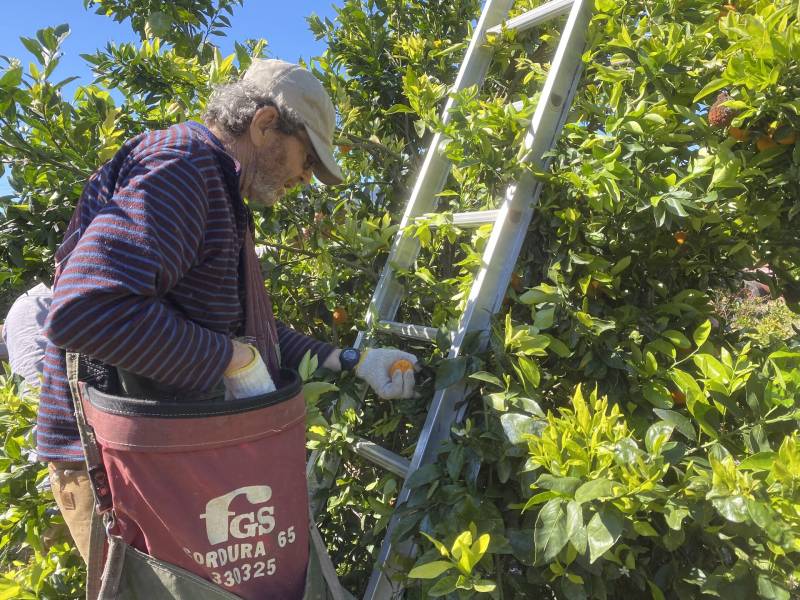
Ojai's main street is charming, boasting tile roofs and Spanish-revival architecture. On weekends, crowds of the bohemian chic spill out of restaurants, boutiques and art galleries in the picturesque Ventura County valley ringed by mountains.
“Starting in the 1800s, people who could afford to would come out from the East and winter here,” explained long-time resident Tony Thacher. The town has hosted a tennis tournament since the 1880s and a music festival since the 1940s, and has drawn seekers to its spiritual centers and schools for over a century.
“It served as a getaway for people from LA and Hollywood over the years,” Thacher explained.
Ojai also drew farmers, like Thacher. The town is surrounded by orchards, some olive and avocado but mostly citrus. It's iconic among citrus lovers, known for producing high-quality Valencia oranges originally, and more recently the Ojai Pixie tangerine.
The valley's climate has been ideal for citrus, but it's changing — getting windier, drier and hotter. A recent study showed that Ventura County's temperature has warmed more in the last 125 years than any other county's in the lower 48 states.
Fire and drought have caused some Ojai growers to take out orchards; farmers estimate working farmland has shrunk at least 15% over the last decade. Ventura County officials are concerned enough that they're partnering with the local Farm Bureau and The Nature Conservancy to evaluate threatened farmland in Ojai and across the county.
Some farmers are questioning whether agriculture even has a future in the Ojai Valley.
The Ojai Pixie
The fruit this valley is best known for is the Ojai Pixie.
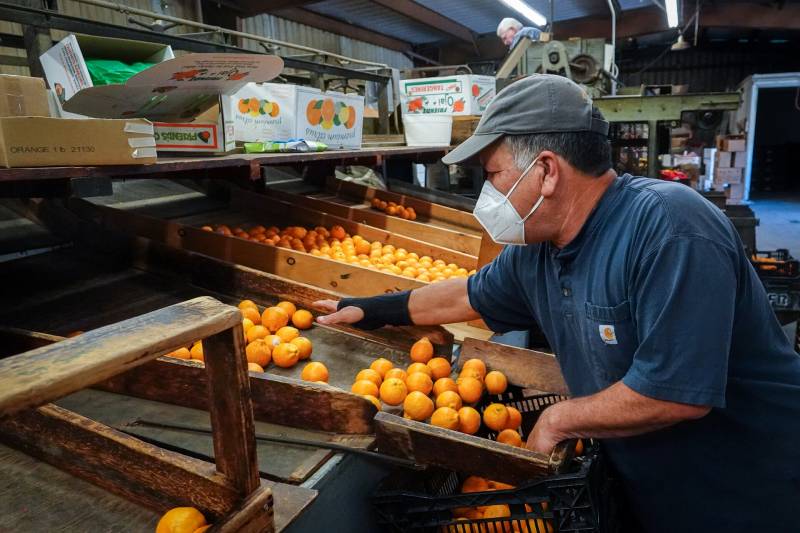
“Pixie is one of those varieties we have a bit of lore about in Ojai,” explained Thacher, who's a longtime farmer in the valley.
Thacher's wife's family began growing citrus in the Ojai Valley in the late 1800s, and its descendants operate Friend's Ranches on 65 acres. They grow avocados and a few other crops, but the bulk of their crop is citrus — more than 50 varieties of oranges, lemons, grapefruit and tangerines.
Thacher and his wife, Anne Friend, quit their academic lives to work for her family's farm when a 1969 flood washed out the original packinghouse. The Pixie was an experimental variety of tangerine developed by scientists at the University of California, Riverside — small, seedless and easy to peel. The folks at Friend's Ranches had planted some but, by the early ‘80s, had just two productive trees.
“I realized early on, when our children were small, they were just cleaning the bottoms of those trees as far as they could reach,” Thacher recalled. “It looked like feral pigs had gone through the orchard. There was no fruit, but there were peels. So that's kind of a wake-up call for a farmer.”
Across the valley, Jim Churchill, who spent much of his childhood in Ojai, had only started farming avocados a few years earlier. “I didn't know anything about agriculture, but I grew up walking through the orange groves, and I know what a ripe citrus tastes like,” he said.
Churchill recalled visiting Friend's Ranches one day. “I pulled something out of a bin, and I peeled it and put it in my mouth and I said, ‘Tony, what is this?'”
It was a Pixie.
“And I just thought, ‘This is what I'm going to grow,'” Churchill said.
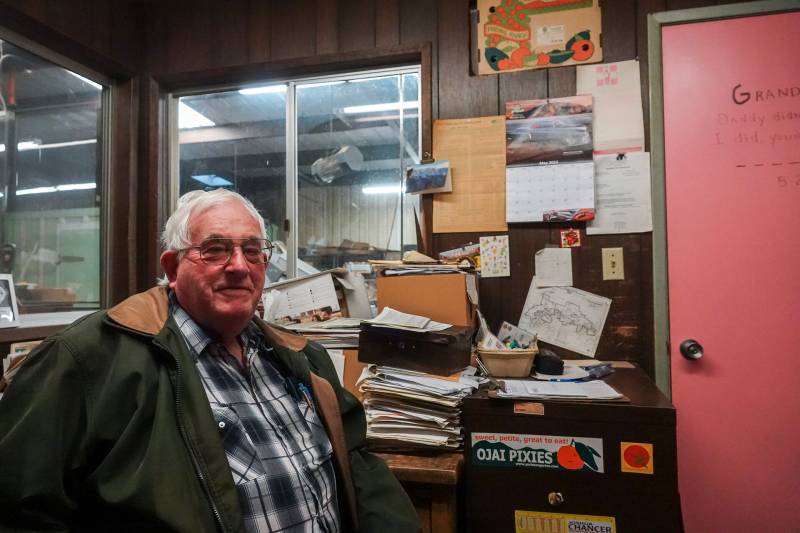
Churchill planted some Pixies, and Thacher planted more. Eventually, with a few other farmers, they started the Ojai Pixie Growers Association.
Commercial success took time, though. Churchill reached out to markets across the state, but couldn't find customers. He wasn't sure his farm was going to make it. Things finally changed in the late '80s when Monterey Market in Berkeley, 350 miles north, took a chance on the fruit, and the pastry chef for a groundbreaking restaurant got a taste. Churchill's voice cracked when he recalled the story.
“I could never talk about this without crying,” he said. “Lindsey Shere was the founding pastry chef at Chez Panisse, and she took Pixies and put them on the menu. And … then we were OK.”
Pixies gained credibility. Now, nearly 40 years later, Ojai Valley farmers ship up to 2 million pounds of Pixies all across the country each year.
The many costs of fire
Tony Ayala helps run the operation at Friend's Ranches. His wife, Emily, is Tony and Anne Thacher's daughter. At their packinghouse, he classified fruit by size, getting ready for the weekend farmers markets. His hands were busy sorting tangerines as he talked about changes in Ojai's weather.
“Back in the late '60s and early '70s, every year there would be snow in these mountains, and there would be snow for weeks on end,” said Ayala. “Now, if it snows, it lasts maybe until noon, if that.”
The biggest difference for him was something he witnessed over the course of his first career, the 25 years he spent as a firefighter and battalion chief. “The winter was the time to get a lot of training done. You didn't have to worry about fire,” he said. But the Thomas Fire, in 2017, started on December 3. “That's one of the biggest fires we've had. In December!”
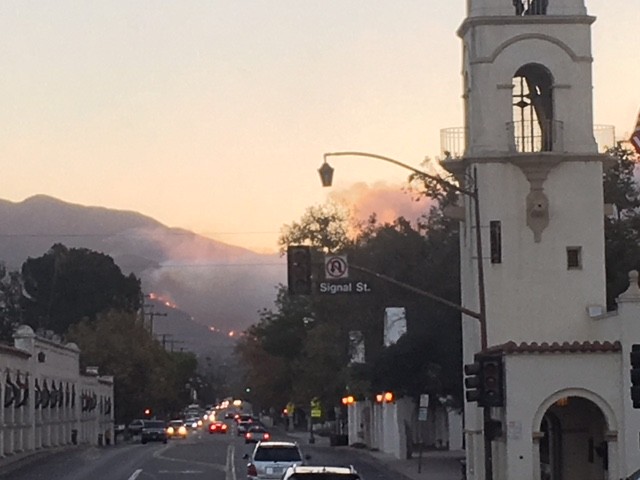
The Thomas Fire caused an estimated $170 million in damages to Ventura County's agriculture industries. At Friend's Ranches, flames came right over the metal building housing the packing machinery. They lost 3.5 acres of tangerines and avocados, but Ayala considers himself lucky.
“Citrus trees don't carry fire very well, and this whole valley is citrus,” he said. “That's what basically saved us.”
But, Ayala explained, the impact of the Thomas Fire continued even after the flames were extinguished. “The smoke was here for so long that it did affect the trees,” he said. Fruit was covered in layers of ash, and gasses in the smoke made fruit mature faster and drop. Much of it was ruined. Tony's wife, Emily Thacher Ayala, tried to sell some at a discount at a farmers market. As a joke, she labeled some completely burned fruit as “Thomas Fire Specialty Tangerines.”
Tony Ayala walked outside the packinghouse to point out another way fire can hurt crops: erosion. When a hillside burns, there is nothing to hold the soil in place. After the Thomas Fire, a big rain started a slide, and mud buried the trunks of more than an acre of trees. “We lost a bunch of trees down there because it gets up so high, it just kills them,” he said.
The problems didn't stop there. Ash and fine silt hardened in the bottoms of creeks, and stopped water from percolating down into the soil and recharging the aquifer that many farms here rely on for irrigation.
Then there was the impact on infrastructure. Water lines burned, plastic irrigation lines melted, power lines fell. “We didn't have power here for weeks,” Ayala recalled. They lost coolers full of juice and had to borrow a heavy-duty generator to run a pump to irrigate their thirsty trees.
“Because that's a must. They're not going to wait,” he said.
Managing a crisis worse than fire
At his 15-acre organic orchard, Jim Churchill was up on a ladder, picking the last of the season's Pixies. Those tiny tangerines, along with Kishu tangerines and avocados, make up the bulk of his crops; he's also experimenting with a fruit called oroblanco, a cross between a pomelo and a grapefruit.
With wildfire and other signs of climate change affecting this valley, drought is Churchill's primary worry. “All the water that anybody has in the Ojai Valley, whether it's from their own well, from Lake Casitas [the local reservoir] or one of the little mutual water companies, it all comes from the sky,” he said.
Because of drought conditions, farmers who rely on Lake Casitas for water have faced restrictions since the 1980s; recently, most have had to cut back 30% from their 2012-2013 usage. But orchards are different from row crops — such as strawberries or lettuce — that are planted each year. It takes three to four years before a tangerine or avocado tree will bear fruit a farmer can sell. So farmers take a big financial hit when they have to rip out their trees.
Churchill said some of his neighbors have dug up sections of their orchards to use less water. Friend's Ranches removed Valencias and didn't replant some of their orchard after the Thomas Fire. Their total acreage is down 15% compared to what they were farming before the drought and the Thomas Fire.
Churchill said he's tried to avoid drastic measures. “We didn't do wholesale removal, but we took out some trees, things that just weren't productive, or things that died we didn't replace,” he said.
For the past 20 years, Churchill's also been mulching, building nutrients in his soil and keeping trees cool in the heat. An orchard with a bare floor absorbs more heat from the sun than one covered in mulch. “And it's good for runoff. We don't have any runoff from this farm,” he explained.
Churchill uses water-saving mini-sprinklers and even installed monitors throughout his orchard to measure exactly how much moisture leaves are releasing into the air.
“When it tells me that an inch of water has been drawn down from a particular irrigation block, then I apply an inch of water,” he said.
Avocado trees basically shut down if the temperature goes above 95 or 100 degrees. One nearby farmer, Helen McGrath, said that during a heat wave, avocados trees dropped so much fruit it sounded like rain. Churchill and his partner obsess over the weather, and irrigate ahead of a heat spike to keep trees cooler.
They check each irrigation line for problems every time they turn one on, “looking for blockages and leaks, because there's always something,” Churchill said. “A coyote will grab a hose, or some crud gets in a line. We are very careful.”
Housing hot spot
Churchill drove through a valley, pointing out another farmer's orchard full of dead or dying trees. “He just turned off the water,” Churchill said of the farmer who owns the land. “Wasn't worth it to him.”
Churchill stopped at a vista point overlooking the Ojai Valley, with the Topatopa Mountains in the far distance. From here, he sees what an out-of-towner can't. “Look at that dead patch in that olive orchard,” he explained. Then he pointed to another area next to a grove of Valencia oranges and said, “They just took that orchard out. People have been abandoning orchards because they don't pay. And also new people are buying them who aren't farmers.”
Ojai is a hot spot in more ways than one. Temperatures are rising, yes, and so are real estate prices. This valley has been a destination for decades. But now, Churchill said, the influx of newcomers is unlike anything he's ever seen.
“In the last three or four years, everybody wants to live in Ojai, it seems like,” he said.
It's people with a lot of money, from industries like tech and entertainment. “They're buying 10 acres, so all of a sudden, they have a whole bunch of lemons or a whole bunch of oranges,” he said.
Having more wealthy people move into the region, Churchill said, puts pressure on a community like Ojai.
“It raises the price for people that live here. If you own property, you're fine. And if you don't own property, you just can't afford to live here anymore,” he said. “So the texture and flavor of the town is very different than it has been. I know this is happening all over the United States, but it's particularly intense here.”
That puts Churchill in a funny situation. He's 75, and his orchard is on land that's probably worth a lot. “I have money as long as I keep working. And I am reluctant to sell the land to the people that could buy it from me. And I haven't got a solution for that,” he said.
Neither does his old friend Tony Thacher. He's 81.
“You know, being an old man, I'm reasonably pessimistic that agriculture may not survive in Ojai,” he said.
Thacher sees the irony in what he said next.
“We sold one piece of property. What did we do with that money? Well, we went and bought two rental units,” he said with a sad laugh, noting that it was money that didn't go back into farming in the Ojai Valley.
This piece was produced in collaboration with the Food and Environment Reporting Network, a nonprofit, investigative news organization.
